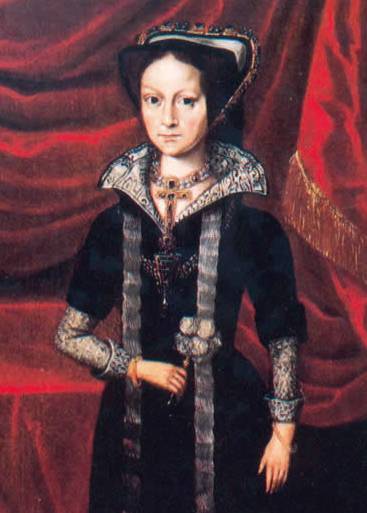Elisabeth of Brandenburg (1510-1558)
Elisabeth of Brandenburg, Duchess of Brunswick-Lüneberg and Henneberg (1510-1558)
Biography
Elisabeth of Brandenburg was born in 1510 and died in 1558. In 1525 Elisabeth married the widowed Duke Eric I "the Elder" of Brunswick-Göttingen-Calenburg and became Duchess of Brunswick-Lüneberg. When her husband died in 1540, she became regent for son Eric II of Brunswick-Lüneberg, between the years 1540-1545. In 1546 she married her secon husband Count Poppo XII of Hennesburg, and with that marriage she also became Duchess of Henneberg.
Towards the end of the 1530's elisabeth converted to Protestantism by accepting the communion publicly. Then during the regency for her son Eric II, Elisabeth focused on changing and organizing the princely household, by giving out new household staff titles. Elisabeth focused also to reform and create a church order and by extension the conversion of the catholic monasteries in the territory to Protestantism. Towards the end of the regency, Elisabeth created a government manul for Eric II, which contained advice that could help guide him during his reign. Elisabeth's work of converting the territory into Protestantism was undone when the regency ended and Eric II came to power in 1545, since he chose to convert back to Catholocism in order to try and gain opportunities at the imperial court.
The last couple of years of Elisabeth's life wasn't easy, as she had to watch with concern and fear as her son Eric II married her youngest daughter Catherine who was Protestant, to High Burgrave William of Rosenburg who was Catholic. When Elisabeth journeyed to Münden for the wedding, she found out that her son Eric II had deliberately sen her the wrong date, so that she woud arrive a couple of days after the wedding had taken place. In 1558 Elisabeth of Brandenburg, Duchess of Brunswick-Lüneberg and Henneberg died exhausted and with a broken heart.
The Duchess who tried to burn her rival at the stake
Elisabeth's marriage to her husband Eric I of Brunswick-Göttingen-Calenburg wasn't without its problems. Towards the end of the 1520's Elisabeth accused Anna of Rumschottel, who belonged to the landed gentry and had been for years the mistress of Eric I. Elisabeth accused Anna of being responsible for the complication that she suffered during her second pregnancy, and followed her accusation with another, accusing Anna of witchcraft. While Elisabeth tried to convince her husband Eric I to have Anna burned at the stake, Anna manged to escape. However, while Anna managed to escape, there were a couple of women who were accused of helping Anna escape. As a result some of them died by being tortured at the stake during the proceedings of the inquistion. Elisabeth was said to have suffered from a form of "hysteria", which was thought to be a mental disorder resulted from an disordered womb. We now know this was a sadly common medieval misconception about women's health.

